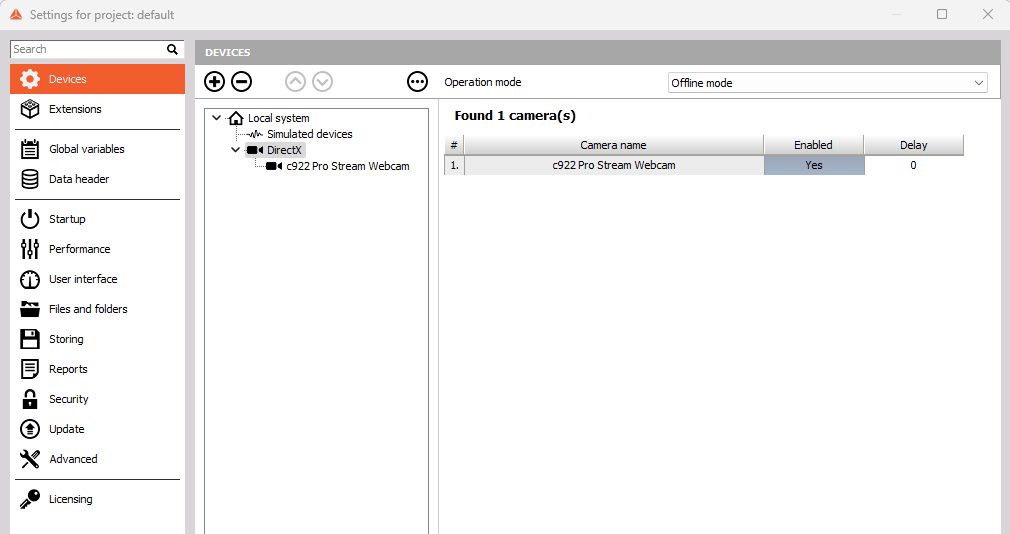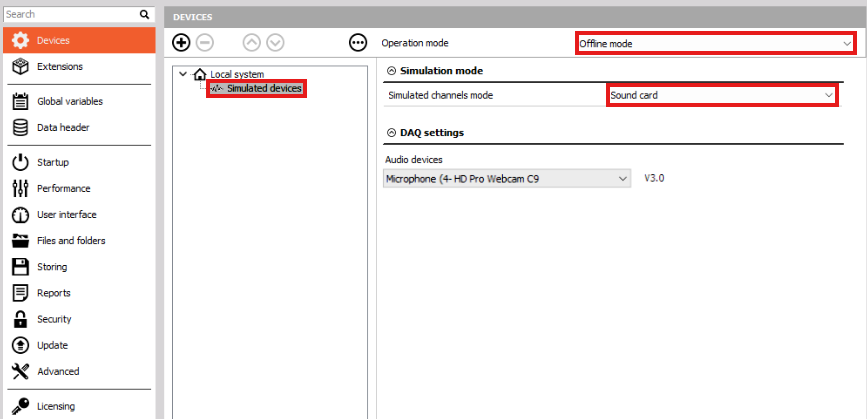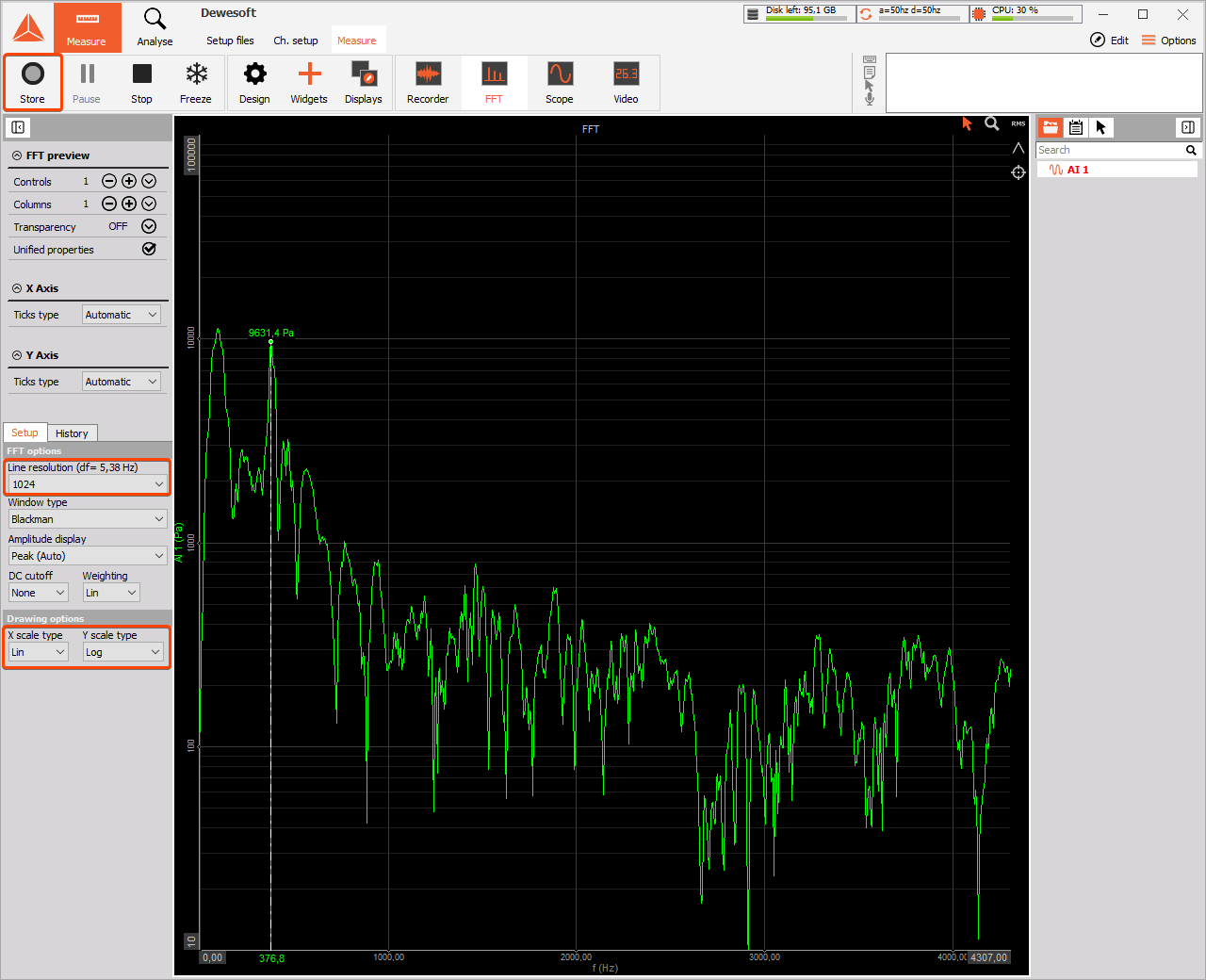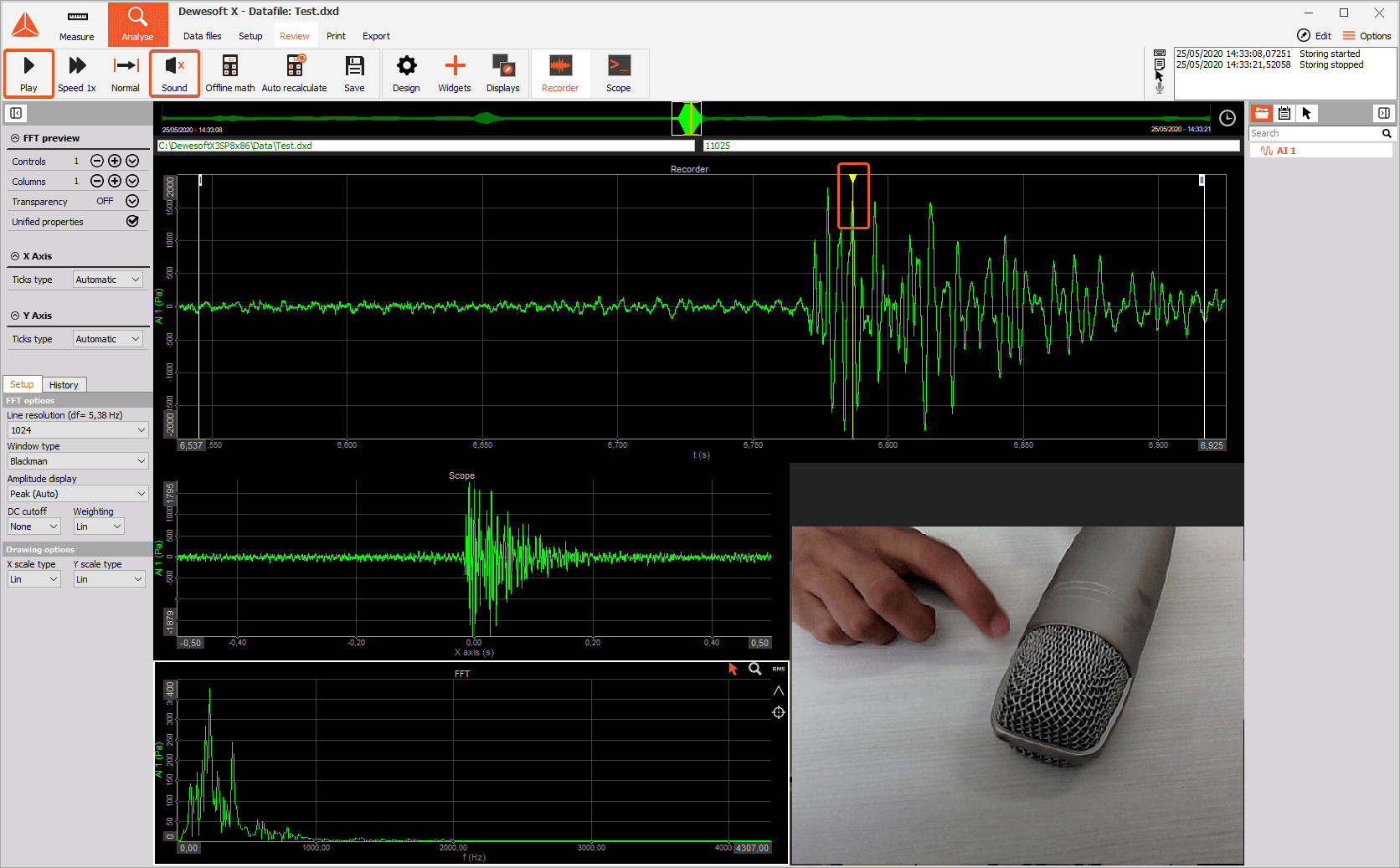This lesson will first show you how to do a simple measurement with Dewesoft X. The hardware used is a sound card and a webcam.
First, you have to download Dewesoft X software from our page. Download and run the Installer. To follow this tutorial, you should have a physical license (professional or trial .lic file) in the Dewesoft, and also the webcam plugged in. Now you can choose DirectX camera in the Settings.
 Image 1: Devices settings menu
Image 1: Devices settings menu
You can download the Audio card from our Webpage (SB_v3_0.zip). Copy the .daq file to the Dewesoft X installation folder (if Dewesoft X is installed on C, the link would be: C:\Dewesoft\Bin\X2\Addons).
Now run Dewesoft X as an administrator.
You can activate the Audio card in three simple steps in Device settings:
- make sure that operation mode is in "Offline mode"
- click on simulated devices
- change simulated channels mode to "Sound card''
In the DAQ settings section, you can see your active audio devices.
 Image 2: Activating audio devices
Image 2: Activating audio devices
Even though there is not much instrumentation used in this example, it still gives the user a good example of what can be done in Dewesoft X software.
The following table displays the required hardware and software for completing this lesson.
| Required hardware | Sound card, webcam |
| Required software | Dewesoft X, any license |
| Setup sample rate | At least 1 kHz (the setup sample rate is chosen in Settings -> Global setup - > General -> Setup sample rate; some math modules require higher rates) |
In the upper left corner of the screen, you can find two main tabs - Measure and Analyse. They are used to switch between Measure mode to acquire the data, and Analysis mode to process the data.
 Image 3: Two main tabs
Image 3: Two main tabs





 button. Add device field will open and you will be able to add the camera that you are using.
button. Add device field will open and you will be able to add the camera that you are using. 













